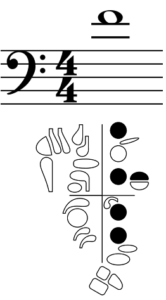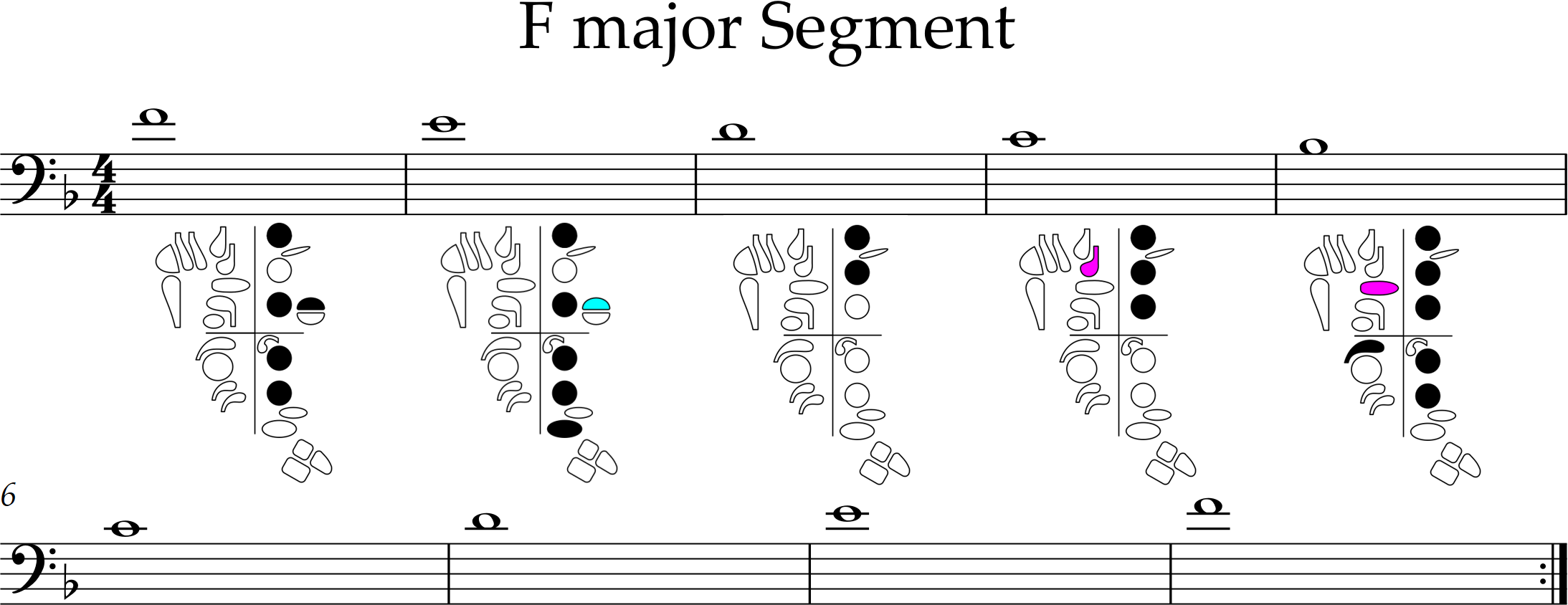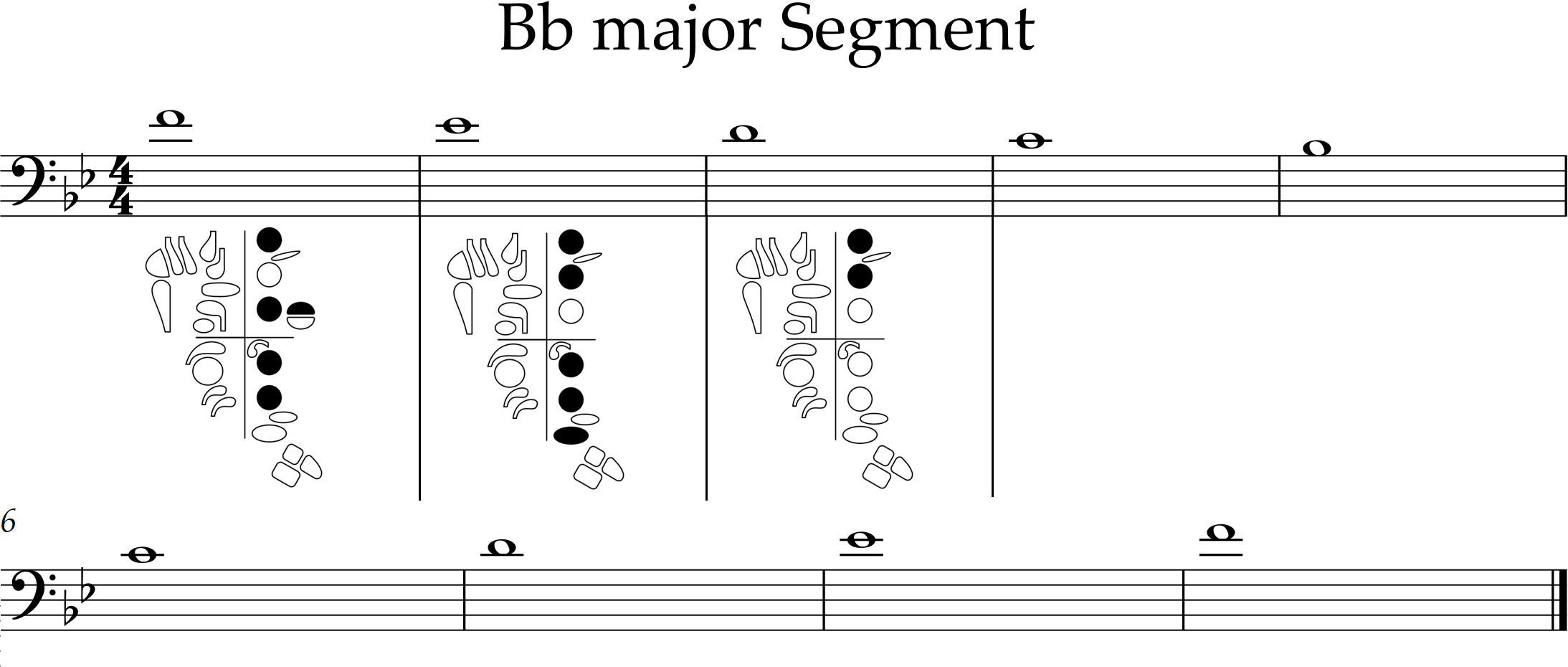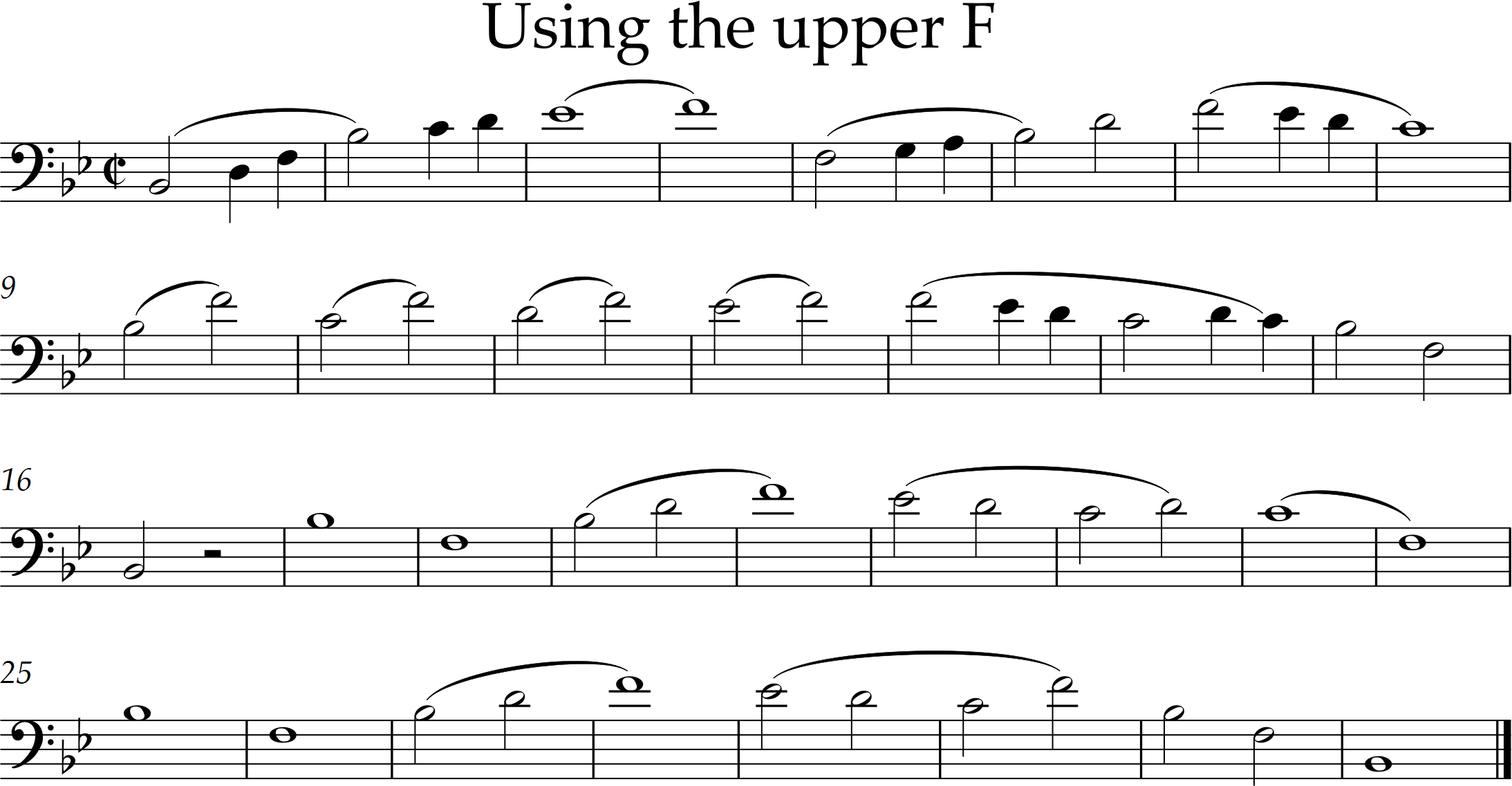Fingering

Intonation and Tone Quality
It is important to use the Resonance Key on all notes F and above. The resonance key will improve intonation and will add fullness to the tone quality.
This note tends to be flat so be sure to:
- Use your very best breath support
- Blow very fast, cold air
- Voice a high vowel shape
- Use the natural space in your oral cavity (do NOT exaggerate the space between your teeth for this note)
- Firm lips but relaxed, soft jaws
- Add a small amount of upward support from the center of your bottom lip/jaw

F major Segment
In the key of F major, the tricky fingering happens between upper E and upper D with the change in the left-hand middle and ring fingers and lifting the pinky resonance key. Moving from upper F to upper E only requires adding the right-hand ring finger.

C major extended scale
This exercise extends the C major scale beyond one octave to give you practice playing upper D, E, and F. Just like in F major, the tricky fingering happens between upper D and E with the change in the left-hand middle and ring fingers and the addition of the pinky resonance key. Moving from upper E to F only requires lifting the right-hand ring finger.

Bb major Segment
In the key of Bb major, the tricky fingering is between upper F and E-flat because you have to swap the left-hand middle and ring fingers and lift the pinky resonance key while also adding the right-hand ring finger. E-flat to D requires changing three fingers but all are lifted so it isn’t as tricky.

Etude for upper F
Unlike with upper E-flat and E, there is no slur fingering for F3. As you make the slur you need to:
- Audiate the octave to create an accurate aural target (hear where you are aiming).
- Maintain your best breath support.
- Double your air speed as you move to the upper F.
- Add a small amount of upward pressure from the center of your bottom lip.
- Add the resonance key for the upper F.





Feedback/Errata